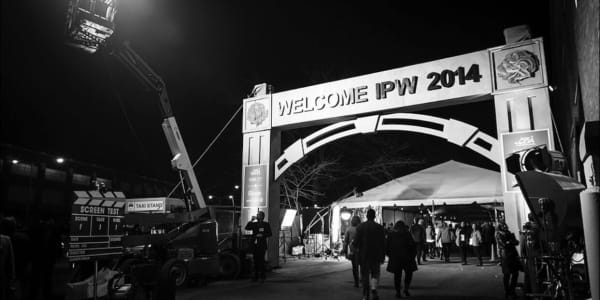Lots of kids grow up dreaming of someday making it to outer space, only to find as they get older that their chances of making it into NASA's astronaut program are incredibly slim.
For most people, that's the end of the dream, but some leaders of industry didn't give up quite so easily. The rise of private spaceflight companies has reinvigorated their fascination — and these visionary founders are willing to put their cash on the line to explore it further. Several high-profile business leaders, entrepreneurs and successful dreamers have made significant investments in space programs. Here's a look at some of the biggest names.
Elon Musk
Musk may well be the most visible advocate of privatized spaceflight. The billionaire serves as CEO and CTO of SpaceX, which he founded in 2001 (two years before he started Tesla). In 2006 the company was awarded its first contract from NASA and has grown considerably since then. Today it employs nearly 5,000 people and has a valuation of roughly $12 billion.
It hasn't always been smooth sailing, though. While the company has had a winning track record on the whole, it has also suffered a number of high-profile mishaps, such as June's crash landing of its Falcon 9 reusable rocket. And earlier this month, an explosion of one of the company's rockets on the launchpad destroyed a $200 million communications satellite that Facebook was planning to use to expand across Africa. While the cause of that explosion is still under investigation, the company has said it plans to launch another vessel in November.
Jeff Bezos
The founder of Amazon has been a bit more low key about his extraterrestrial interests for a while but recently started talking more about Blue Origin, a space travel company that hopes to make spaceflight available to a mass audience. Earlier this month, it announced a new 270-foot-tall rocket, called the New Glenn, which has a reusable booster. The company has leased a retired launchpad at Cape Canaveral to test its engines and launch rockets. It hopes to begin flights by 2020.
"Do we want to go to Mars? Absolutely," Bezos told reporters at a 2015 Cape Canaveral event. "But we want to go everywhere. And if you want to go everywhere, then you need to dramatically lower the cost of space."
Richard Branson
Bezos isn't the only leader with an eye on space tourism. Branson's Virgin Galactic suffered a setback two years ago when its spacecraft came apart during a test flight, but it recently began flight testing once again. The delay and incident (in which one of the pilots was killed) hasn't dampened enthusiasm. Hundreds of people have signed up for the flight (some paying $250,000), which will take them 62 miles above the Earth and offer five minutes of weightlessness. Branson himself has said he plans to be on the first expedition — along with his children.
They're going to have to wait a bit longer, though. Originally scheduled to begin commercial operations in 2012, Virgin Galactic has postponed tourist flights until its vehicles have been thoroughly tested.
Mark Zuckerberg
The Facebook founder isn't so interested in exploring outer space himself, but he'd still love to know what's out there. Zuckerberg, along with scientist Stephen Hawking and Russian venture capitalist Yuri Milner have aligned themselves with The Starshot Project, an ambitious attempt to send small robots to the far reaches of space, including Alpha Centauri (which is 25 million miles away) to see what secrets are out there.
Normally, the trip to Alpha Centauri would take 30,000 years, but the project hopes to make the journey in 20. It aims to do that by installing tiny chips (including a processor, power supply, camera and navigation equipment) mounted onto postage stamp–size ships that make their way through space using a sail pushed by a light beam. If all goes according to plan, the probes will travel at one-quarter the speed of light.
Robert Bigelow
He made his fortunes as the owner of the Budget Suites of America hotel chain, but Bigelow decided at age 12 that he wanted to be a space traveler. He didn't have the math skills to pull it off then, but that determination was just as strong in 1999, when he founded Bigelow Aerospace, a company focused on creating habitats in space for astronauts or others to inhabit. Those can range from private space stations to, essentially, houses on the moon. In 2013 NASA signed a $17.8 million deal to evaluate the company's technology.
Bigelow focuses on making inflatable modules, which are insulated by foam layers and a bullet-resistant fabric. That means large habitats can be compressed into a relatively small cargo area and transported to space, as opposed to fixed-sized modules, like on the International Space Station. Ultimately, the company said, it seeks "to assist human exploration and the discovery of beneficial resources, whether in Low Earth Orbit, on the moon, in deep space or on Mars."
Paul Allen
The co-founder of Microsoft was the sole investor behind Burt Rutan's SpaceShipOne, which won the 2004 Ansari X Prize competition. In 2011 he doubled down on space travel, teaming with Rutan to found Stratolaunch Systems, which aims to make a 238-foot jet aircraft (with a wingspan of 385 feet) that will take rockets to a high altitude before they separate and the rocket climbs into orbit.
The initial escape from Earth's gravity burns the most fuel for rockets. But this method would also allow rockets to launch in bad weather and not have to worry about finding an available launchpad. The company has since been folded into Allen's Vulcan Aerospace.
James Cameron
If you've seen Cameron's movies, it's probably not a surprise that he's fascinated with outer space. But in 2012, Cameron was one of the investors (along with Google CEO Larry Page and executive chairman Eric Schmidt) in Planetary Resources, a company that seeks to use robotic ships to mine asteroids for precious metals such as gold and platinum.
The company deployed its first test spacecraft last July, focusing on core technologies and looking for resource-rich asteroids but has not discussed the success or failure of the mission.
Naveen Jain
In a race against global superpowers, Moon Express — a private venture founded by billionaire entrepreneur Naveen Jain, space technology guru Dr. Barney Pell and space futurist Dr. Bob Richards — has cleared a path for private U.S. companies looking to explore and commercialize space.
Today the company is the first private enterprise in history to receive U.S. government approval to travel beyond Earth's orbit and undertake a deep space mission. The goal: to land a robotic spacecraft on the moon's surface in 2017 and analyze and explore its valuable resources worth trillions of dollars that can be used on Earth. The moon is a treasure chest that has vast amounts of iron ore, water, rare Earth minerals and precious metals, as well as carbon, nitrogen, hydrogen and helium-3, a gas that can be used in future fusion reactors to provide nuclear power without radioactive waste.




